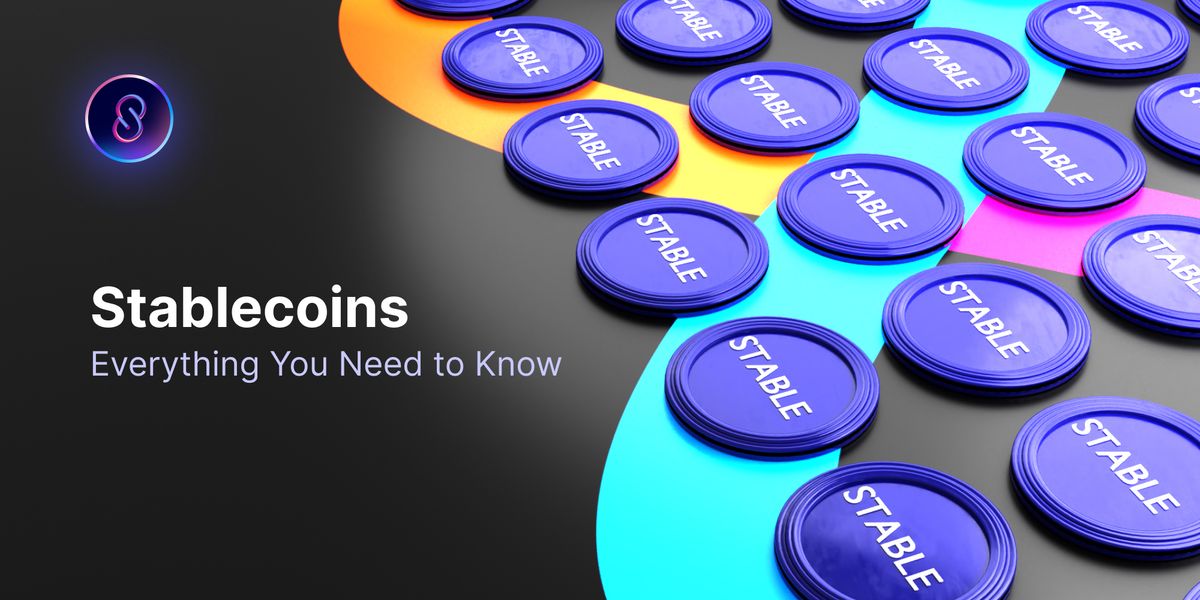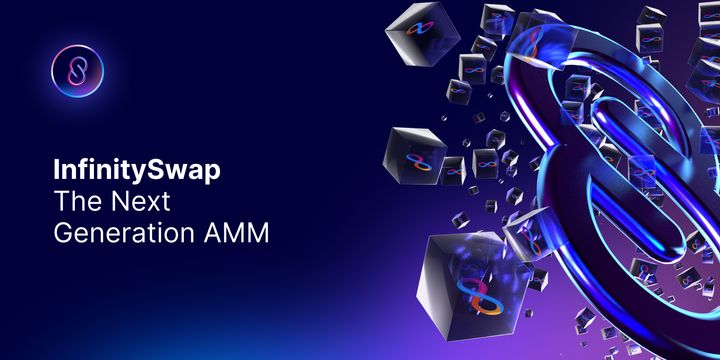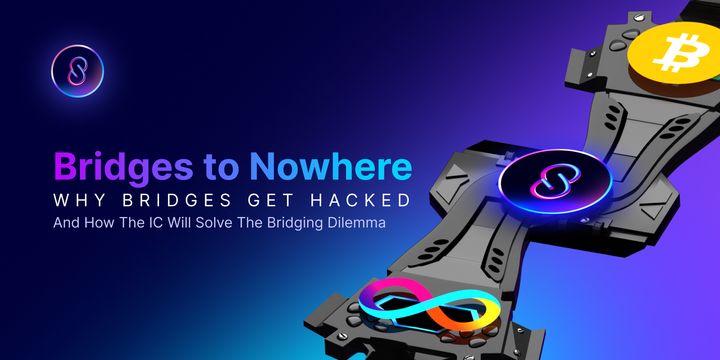Stablecoins: Everything You Need to Know
As the Internet Computer gains in popularity and more applications are being deployed on more canisters, the way is being paved for Decentralized Finance, or defi for short, to take off.

As the Internet Computer gains in popularity and more applications are being deployed on more canisters, the way is being paved for Decentralized Finance, or defi for short, to take off. Defi is a general term referring to different applications built to facilitate the trading, swapping, lending, and borrowing of financial assets such as the ICP coin, Bitcoin, and Ethereum.
One important question yet to be answered is regarding the stablecoin of choice on the Internet Computer. Given the recent issues around Tether and the collapse of Terra stablecoin UST, it's essential to familiarize yourself with the types of stablecoins and what differentiates them. Not all stablecoins are built the same! Major categories of stablecoins include centralized, decentralized, collateralized, overcollateralized, and undercollateralized. Additionally, stablecoins can vary in what collateralizes them.
Stablecoins are a vital part of defi, almost taking up as much market cap as all of Ethereum. That being said, once defi starts to take its hold on the IC, it becomes important to decide which stablecoin you will hold and transact with and what stablecoins developers will build their platforms around. With this in mind, let's discuss the different types of stablecoins.
What is collateralization?
Collateralization refers to the 'backing' a stablecoin has. For example, if a party holds $100 in cash in their bank account, then issues 100 stablecoins and allows you to claim that stablecoin for one real dollar, that stablecoin is collateralized by fiat dollars. This gives it a collateralization ratio of 100%, meaning it's backed 100% by the fiat dollars in the party's bank account. Suppose the party issues 100 stablecoins with $150 in its bank, which gives it a collateralization ratio of 150%. Likewise, if that party holds only $80, the ratio would be 80%.
Higher collateralization ratios are safer because, in times of high volatility or when many people redeem their stablecoins for other assets, higher ratios mean there is enough cash to keep up with redemptions. In the above situation where 100 stablecoins were issued against $80, if 80 stablecoins are redeemed, the other 20 become worthless as nothing is backing their value.
Understanding collateralization ratios, we can discuss the types of collateral used to back stablecoins.
What is a 'peg'?
A peg in the context of stablecoins refers to the stablecoin retaining the value it's supposed to stay at. For USD stablecoins, the peg is at $1.00. "To maintain peg" means for the price of that stablecoin to remain at $1. When a stablecoin "depegs," it means that the coin is trading away from its pegged value. This is often to the downside, such as a USD-pegged stablecoin trading at $0.90. The tighter the range of a stablecoin can stay to its peg, the more stable and trustworthy it's considered, but this may not always be the case.
While the most common stablecoin peg is $1, it is possible for stablecoins to be pegged to other values. For example, Circle is soon releasing a stablecoin pegged to the Euro, and Tether plans to release a stablecoin pegged to the British Pound.
Fiat-backed Stablecoins
Fiat-backed stablecoins refer to ones where the issuer of the stablecoin has cash or cash equivalents backing their stablecoin. The prime examples are USDT and USDC, issued by the companies Tether and Circle.
Both companies have cash backing their stablecoins and only issue new stablecoins when they have new cash to do so. Instead of cash directly, they may also hold cash equivalents. This means they may invest their idle cash into safe assets such as government bonds or treasuries or loan it out to generate interest.
This allows the company to profit, issue new stablecoins backed by the earned interest, or both. However, this may also be a risk; in the rare cases that their investments are less safe than expected, they may experience a loss of capital. These investments may also be less liquid than cash, meaning in the event of mass redemptions, they may not be able to cash in their investments quickly enough to keep up with demand.
The reason that these companies choose to invest this capital is to increase capital efficiency. Capital efficiency refers to how much usage the same piece dollar value of capital is getting. For example, suppose a dollar is both earning yield in a government-issued bond and is also a stablecoin being used by an individual. In that case, that dollar serves a dual purpose and is said to be more capital efficient than a dollar sitting in a bank account.
It is also possible that the companies may issue stablecoins that aren't backed. Because fiat-backed stablecoins are typically held by centralized institutions such as Circle and Tether, their reserves are not transparent on any blockchain. This is why they may choose regular audits or attestations to their reserves. This increases trust and ensures that the stablecoin will retain its peg at $1.
While Circle has performed annual audits and regular attestations, Tether has been less transparent, which has led to recent depegging incidents. While nobody can say for certain what Tether's risk profile is, it shows that all stablecoins are not equal, and research should be done before holding assets in a given stablecoin.
These stablecoins tend to be the most reliably pegged to $1 because the companies that issue them tend to have the best ability to convert the stablecoin back to a dollar and vice versa. For example, on Coinbase, users can convert USDC to USD at no cost, giving anyone a way to match the stated $1 price easily. Because of this, they are often the first stablecoins to be introduced into a defi environment. Historically speaking, it's most likely that the first stablecoins introduced into the IC's defi space will be USDC, USDT, or both.
Crypto-backed Stablecoins
Rather than fiat currencies, stablecoins can also be backed by crypto assets, such as Bitcoin, Ethereum, ICP, and others. These stablecoins are typically overcollateralized to account for the volatilities the underlying assets experience. Whereas fiat-backed stablecoins are usually 100% backed, it's not uncommon for crypto-backed stablecoins to be backed with $1.30 to $1.50 or even $2.00 in crypto assets for each $1 in stablecoins issued. This higher collateralization ratio makes the stablecoin more trustworthy, which is necessary given the extreme fluctuations that backing cryptocurrencies may experience.
Crypto-backed stables can usually be minted by anyone who locks up permitted crypto assets as collateral. In exchange for locking the collateral, they may borrow stablecoins so long as the value of their collateral is a certain amount above their borrowed amount. Should the value of their assets fall below this cutoff, their collateral is sold off to protect the issuer of the stablecoin.
Some examples of a crypto-backed stablecoin are DAI, issued by Maker DAO, MAI, issued by QiDao, or MIM, issued by Abracadabra. All these applications allow you to "mint" or create their stablecoin by locking up collateral with them and taking out a loan of their respective stablecoins. Maker DAO, for example, will let you borrow $700 DAI for every 1 Eth locked, valued at $1,211 at the time of writing. This is a collateral ratio of around 170%.
Algorithmic Stablecoins, The Forbidden Fruit
Algorithmic stablecoins are typically undercollateralized, some having no collateral at all. This means that the peg is entirely based on trust, as the stablecoin cannot be redeemed for $1 worth of assets at any time. It is worth noting that there has never been an uncollateralized or algorithmic stablecoin that has stood the test of time.
This is partially because uncollateralized stablecoins that go off peg for any reason can quickly spiral to zero, as a depegging event for uncollateralized stablecoins can result in positive feedback loops that result in price continuously falling. This is what happened to the widely known Terra UST. Once it went off peg, many people tried to swap from UST to a more trusted stablecoin, resulting in the price for UST falling even further from its intended peg.
The most widespread undercollateralized stablecoin is currently FRAX. However, FRAX is only very slightly undercollateralized, with a collateralization ratio of 97%. This means every FRAX is backed by $0.97 of assets, making it exponentially safer compared to stablecoins with no collateralization like the now-worthless UST. Though it still is not as safe from depegging as centralized, fiat-backed stablecoins such as USDC.
Centralized Versus Decentralized Stablecoins
Stablecoins collateralized by fiat are typically centralized, as it takes a centralized party (i.e., a company) to hold the fiat in a bank account. It's not possible to hold parties off-chain accountable enough to hold their own fiat to mint a stablecoin.
On the other hand, crypto-backed stablecoins can be either centralized or decentralized. A company or DAO can buy crypto assets and issue stablecoins against those assets, or in the case of the aforementioned Maker DAO, QiDao, and Abracadabra, allow anyone to mint stablecoins against their crypto collaterals.
Both types hold different risks. Centralized stablecoins can experience regulatory risks. For example, if the local government suddenly freezes the bank account of Circle, then many people would shuffle to sell off their USDC, leading to a depegging event.
As mentioned before, another risk would be if the company's cash reserves were insufficient relative to their stablecoins issued. If Tether issues 50 billion USDT but only has 40 billion U.S. dollars backing it, once this came to light, their stablecoin would likely depeg as well. This is why audits and attestations are important for fiat-backed stablecoin issuers.
One more risk to the holder of these stablecoins is getting their stablecoins personally frozen. USDT and USDC, being centralized, reserve the right to freeze USDC balances at any time. Though this is very rare, and they are unlikely to target specific individuals randomly, should they be forced to by the government or find a reason to, they will be allowed to target an individual's wallet and freeze their stablecoin balance.
Decentralized stablecoins have a different risk profile than centralized ones. Decentralized stablecoins have a much higher risk of depegging because no centralized organization exists to intervene within the otherwise free market. Decentralized stablecoins are also much more likely to suffer irrecoverable hacks because the crypto assets are stored on-chain and, therefore, can be stolen if security vulnerabilities exist.
Furthermore, decentralized stablecoins need liquidity to be able to swap between assets. At the very least, a stablecoin should be able to be swapped for another more popular stablecoin if it cannot be swapped to assets directly. Should no parties be willing to facilitate this trade, for example, DAI to USDC, the stablecoin is essentially useless. This is because a stablecoin is only as valuable as the assets it can be exchanged for, similar to all currencies.
Closing Thoughts
It may even be possible for the Internet Computer to create its own native stablecoin. This would be done as a decentralized, crypto-backed stablecoin, potentially allowing ICP to be collateralized along with other crypto assets. While this hypothetical stablecoin would still retain the same risks as other stablecoins in the same basket, native stablecoins tend to get enthusiastic support from their communities. This additional use case would also benefit the price of ICP since it would be taken out of circulation to back the stablecoin.
In short, there are many things to consider when thinking about stablecoin options. As the Internet Computer gets more defi applications, developers and users will have to choose which stablecoins they are willing to accept the risks of. The stablecoins that users will exchange value in, lend out, and borrow all carry different risk profiles, which need to be accounted for when dealing in defi.
The landscape for defi on the Internet Computer is still very new, and no particular stablecoin holds dominance. As more applications require stablecoins, they will choose whichever they prefer. This means as users; we are responsible for communicating with developers which stablecoins we want to use and for their applications to support them. Be sure to talk to your favorite developers about which stablecoins you would like to see used on their platform!
Connect with InfinitySwap
Twitter | Website | Telegram | Discord | Github

*Disclaimer: While every effort is made on this website to provide accurate information, any opinions expressed or information disseminated do not necessarily reflect the views of InfinitySwap itself.





Comments ()